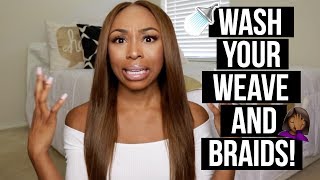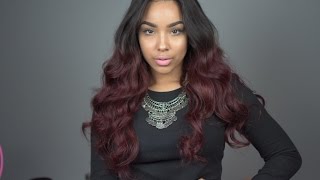Protective Styling: How To Take Care Of Your Hair Underneath A Weave
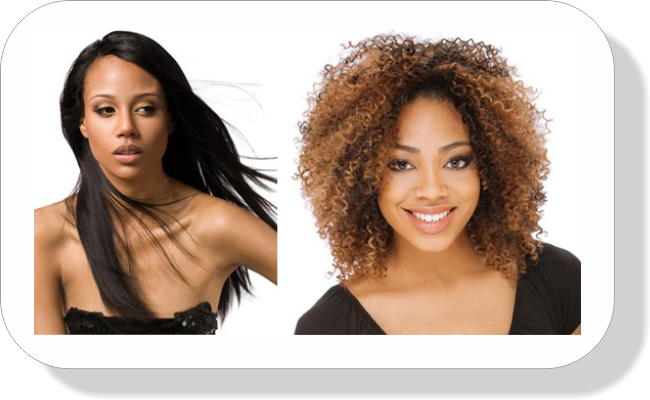 It’s no secret that weaves are very popular among black women. It’s also no secret that majority of weave wearers today do not retain length because many of them concentrate more on the aesthetics of the style instead of the health of their own hair.
It’s no secret that weaves are very popular among black women. It’s also no secret that majority of weave wearers today do not retain length because many of them concentrate more on the aesthetics of the style instead of the health of their own hair.
These skewed priorities are the cause of the seemingly counter-intuitive fact that one can wear a weave for 12 months continuously and wind up with hair roughly the same length as when they started.
Today I hope to do my part in correcting this injustice by helping some of you weave wearers learn how to retain length easily while continuing to wear the extensions you love.
First of all let’s get this out of the way. You own hair should always come first, not ifs no buts. If you know that when you wear a weave, you tend to use it as an excuse to be lazy with your own hair then weaves are a barrier to your ultimate goal of length retention and it’s time to give them up. Period.
Weaves should only ever be used as a tool to help you achieve your ultimate goal of long hair of your own. We are not looking to make weaves* a permanent fixture in your life but rather as a metaphorical band aid and there’s absolutely nothing wrong with faking it until you make it!
Picking The Right Texture Weave For Your Protective Style
When wearing a full weave with no hair left out it stands to reason that you can pick just about any texture that you want, keeping in mind of course that the closer you stick to your own hair’s texture, the more natural the style will look.
I never thought this mattered much before but I now believe that when leaving some of your own hair out to blend with a weave, picking the right texture is very important. To pick the right texture, you must look to get extensions* that are either very similar to the default texture of your own hair or one that you can achieve with the minimum of manipulation.
What I mean by that is, if you have natural hair then you should pick a texture that resembles your hair as closely as possible or one that you successfully replicate with a braid out, twist out or with rollers.
Naturals
Natural ladies trying to blend their own hair with straight weaves over a long period of time isn’t a great idea. You will find that you are having to flat iron* the leave out every single time you wash your hair, every time you work out or every time the humidity hits 60%. This is neither healthy for your hair as you can easily cause irreversible heat damage nor is it very convenient.
In spite of all the pomades and serums available to control humidity, they only work to a certain extent and worrying that your hair is reverting 16 times a day is a distraction that you really don’t need when protective styling.
If you learn to work within your texture constraints or you stick with easy to blend with extensions* you will enjoy the styles much more and you will start seeing real length retention returns from your protective styling efforts.
Curly weaves are higher maintenance that straight weaves*, I know. But so is your natural hair, just deal with it.
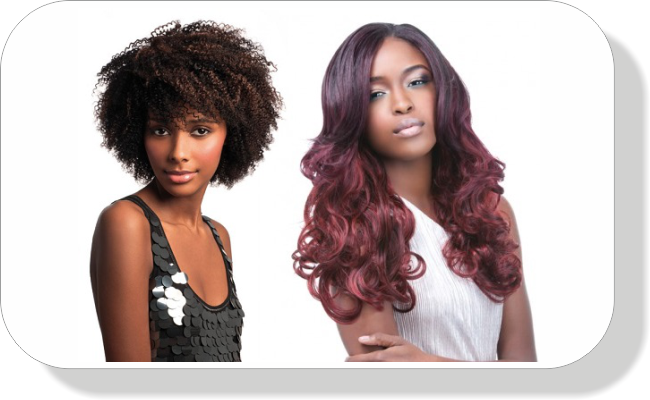 Relaxed
Relaxed
If you are relaxed on the other hand, straight weaves* make the most sense as you won’t have to constantly manipulate your leave out hair to get it to blend with a curly weave. Again I would advise caution with picking the perfect texture to match your relaxed hair.
Go for the ‘relaxed texture’ weaves* offered by some companies or at the very least yaki with low to medium luster (shine) depending on your relaxed hair’s texture.
Silky Caucasian hair does not match relaxed afro hair and I have seen many a relaxed lady literally cook her hair with flat irons* daily trying to make her the hair blend. You will save yourself a whole lot of hassle and breakage if you pick the right texture to begin with.
Washing Your Hair Underneath The Weave
I have already offered my tips on how to make a weave* look as natural as possible in a couple of articles here and here so now it’s time to look at how to take care of your own hair underneath the sew in.
The basic idea of hair care with a weave is to stick as close to your normal regimen as possible while making an effort to prevent build up. That means your normal wash day applies as do your normal moisturizing duties.
The most important thing to remember when washing your hair with a weave* is to dilute all your products. This is where an applicator bottle becomes invaluable. They are dirt cheap, you can pick them up from most beauty stores and they make your wash day so much simpler!
Essentially you mix a small amount of your shampoo with plenty of water. You want to end up with a pretty runny mixture that you can easily get on your scalp and hair underneath.
Conditioning is done the same way, EbonyCPrincess below prefers a thicker mix of 75:25 conditioner to water ratio I prefer a 50:50 ratio. I suggest you test to see what works best for you.
Here’s ECP’s demonstration of how to wash your hair while in a weave:
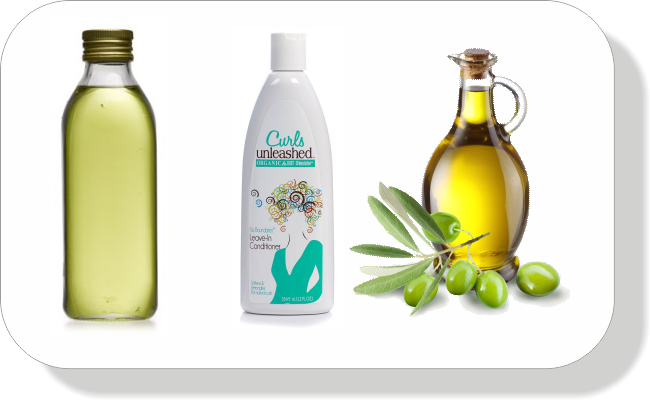 Using Oils & Silicones While Wearing A Weave
Using Oils & Silicones While Wearing A Weave
Oils are great for sealing and silicones help give some of your favorite conditioners that addictive slip but here’s the kicker. Both these are the largest contributors to build up! I have written before about how important sulfate containing shampoos are if you use lots of oils & particularly water insoluble silicones.
If you have worn braids or cornrows for any length of time then you will be familiar with that whitish, gunky stuff that resides at the base of the braid after a few weeks of wearing them. The build up happens when a combination of sebum and product build up collects at the base of the braid allowing fibers and lint to also get stuck.
Not only is this gunk gross to wash out but it is one of the biggest contributors to broken hair after taking out a protective style. If you are natural, you may also see an increase in knots and tangles from shed hairs getting stuck in the gluey sebum residue. Not cute
My battle plan when I have worn weaves* in the past is to increase the frequency of moisturizing or to use a humectant like glycerine* in my braid sprays to attract moisture from the atmosphere and keep my hair soft. If you think about it, wearing a weave is like wearing a hat 24/7 so you will find that your hair will retain moisture better anyway as it is not exposed to the environment as much.
I generally don’t use any oils on my hair while wearing weaves*. Having said that, some ladies have had success in using some natural oils or even hair growth boosting oils during protective styling so I will leave it up to you to decide what is best for your hair and scalp.
Moisturizing Your Hair Underneath A Weave
When it comes to moisturizing, a liquid leave in conditioner* or braid spray is the obvious choice over the creamy leave ins. I’ve got a couple of braid sprays recipes that can double as a great leave in conditioners while you are weaved up.
Here, ECP shows us how she moisturizes her hair underneath the weave. I love her tip to put your moisturizer in the fridge before using it. That way you will be able to feel as each area of your your hair and scalp receive the benefit of the moisturizer. Inspired!
Post Washing Weave Hair Care
How you style your hair after your wash will of course depend on the texture that you have chosen for your weave. Relaxed ladies can roller set the leave out hair as well as the extensions* for a straight style.
Naturals can do a braid out, twist out or flexi rod* set on the hair left out in order to blend with the curly weave. It’s probably best to do your wash routine at night to allow your leave out hair to dry completely before unraveling in the morning.
You can spritz your moisturizer or braid spray on your hair underneath every other day or as needed to keep your hair’s moisture balance in check.
A word of warning: Whether you are relaxed or natural I should stress that you must absolutely allow your hair underneath the weave to dry completely before you got to bed. Even if you have to use a hair dryer* on medium heat to dry your roots then please do so.
Leaving your hair wet for prolonged periods will increase the likelihood of getting a fungal scalp infection which could stunt your hair’s growth and defeating the purpose of the protective style.
Happy hair growing!

